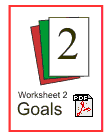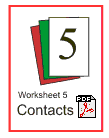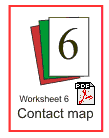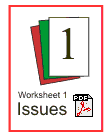- TOOL KITS
- A. The NEXT Step
- B. Promoting Independence
- C. Phone Apps
- D. Return to Work
- E. Motivational Interviewing
- F. Paediatric Brain Injury Rehabilitation Resources
- a) Introduction
- 0. Introduction
- 1. Working together promoting independence
- 2 . Using this kit
- b) Issues, goals, action
- 3. Identifying issues W
- 4. Setting goals W
- 5. Making goals happen W
- 6. Monitoring progress W
- c) Strategies Myself and my relationships
- 7. My behaviour's changed W
- 8. Thinking
- 9. Relationships W
- 10.Conversations
- Managing memory, money and time
- 11. Remembering information and messages
- 12. Finances and handling money W
- 13. Managing time W
- Household tasks
- 14. Food and shopping W
- 15. Food and meals W
- 16. House keeping
- 17. Laundry
- Getting around
- 18. Public transport W
- 19. Accessing the community
- Life tasks
- 20. Self care
- 21. Fitness
- 22. Leisure
- 23. Employment
- 24. Continue learning
- 25. Health and well-being
- Emergencies
- 26. Emergencies
5. Making goals happen
- 5.0
Making goals
happen - 5.1 W
Identify
strategies - 5.2
Supporting the individual
by asking questions - 5.3 W
Helping the individual
keep organised
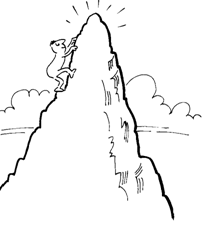
The key steps in making goals happen are:
- Identifying strategies
- Keeping the client focused by asking questions
- Helping the person keep organised

Identify strategies to achieve your goals.
Achieving goals is done step by step.
What are strategies that are steps on the way to achieving the goal?
In Worksheet 2 Goals Identify the strategies.
These strategies were also to be written down on your goal sheet, so you could keep track of what strategies you had tried and what ones enabled you to achieve your goals.
If you are working with others to achieve your goals, there might be other strategies you will use.
Make sure you write down who you are working with and how they will be helping you. By writing down what strategies you have used, you will know what ones do and don't work. You can see a record of your progress in achieving that goal.
Supporting the client making goals happen by asking questions
Identifying the plan is the biggest step.
To keep them working through the plan again start using open ended questions. For example,
- "What are you up to now?"
- "What do we do next?"
- "What does the checklist say to do?"
- "What did we do last, what comes next?"
- "Look around and tell me what we last did."
- "What are we going to do?"
- "What are you going to do next?"
- "What are you doing?"
If the individual is not able to keep track of where they are up to, more structured information needs to be provided. For example, state what they have just done and then ask a question.
For example,
- "You have just cut up the onion, what does this recipe say to do next?"
This provides a cue as to what has been completed. This provides information they can then use to independently work out what has to happen next. This helps them take control and make decisions. Another way to enable the individual to monitor where they are up to on their checklist is to have them cross off each step as they complete it. If the checklists are placed into plastic sleeves and a non¬permanent whiteboard marker or overhead pen is used, the checklists can be reused and are kept safe from the elements.
Problem solving or working out what to do in specific situations can again be assisted by asking open ended questions. Open ended questions enable the person to become aware of what the potential problem may be. Questions can draw their attention to the different parts of what they are doing. For some individuals, simply drawing their attention to a possible problem may initiate problem solving. For others, it may be necessary to identify what the variables are and then provide them with alternatives or a range of options.
How can I stay organised?
To keep you organised, the first thing to do is to get a folder, either a lever arch or ring bound. This is where you can keep all of your information. You need to divide your folder into sections. You can use dividers to do this. Dividers can separate the following sections.
Section 1: Contacts
A map of your social network including useful contacts, emergency numbers. Complete Worksheets 5 and 6
Section 2: Current issues
Complete Worksheet 1
Section 3: Current Goal Sheets
Each goal has its own page. Keep the goals you are working on together until you achieve one. Then file this in "Section 6: Achieved Goal Sheets". Make sure when you achieve your goal you write on your issue sheet when you achieved it! complete Worksheet 2
Section 4: Service Provider Plans
Keep goals or programs you are working on with others here. Ask Service Providers for a copy of the plans you have agreed to work on with them.
Section 5: Achieved Issue Sheets
When you have achieved all issues on your issue sheet, file it in this section. It is important not to throw these sheets out, as it can remind you of how much you have achieved.
Section 6: Achieved Goal Sheets
When you achieve a goal, file the goal sheet in this section. It is important not to throw these sheets out as it can remind you of how much you have achieved, and remind you of how you achieved this goal, just in case you need to refresh these skills in the future.
Section 7: Achieved Service Provider Plan
When you have achieved goals or programs you set up with service providers, keep them in this section. If you update your service provider goals or programs, place them also in this section.
Section 8: Meeting Minutes
When you attend a meeting and are discussing your rehabilitation goals, make sure you take minutes or ask someone to take minutes for you. Keep these as you can look at them again before you go to the next meeting. New goals are usually spoken about in these meetings and you revise how you have gone in achieving your current goals.
Section 9: Self Assessment
If you use some kind of measurement scale to identify when you have achieved your goals or to monitor your progress toward achieving your goals, you need to keep these. They will form a great record of how you are progressing. You can also look back over time and see how far you have come.
